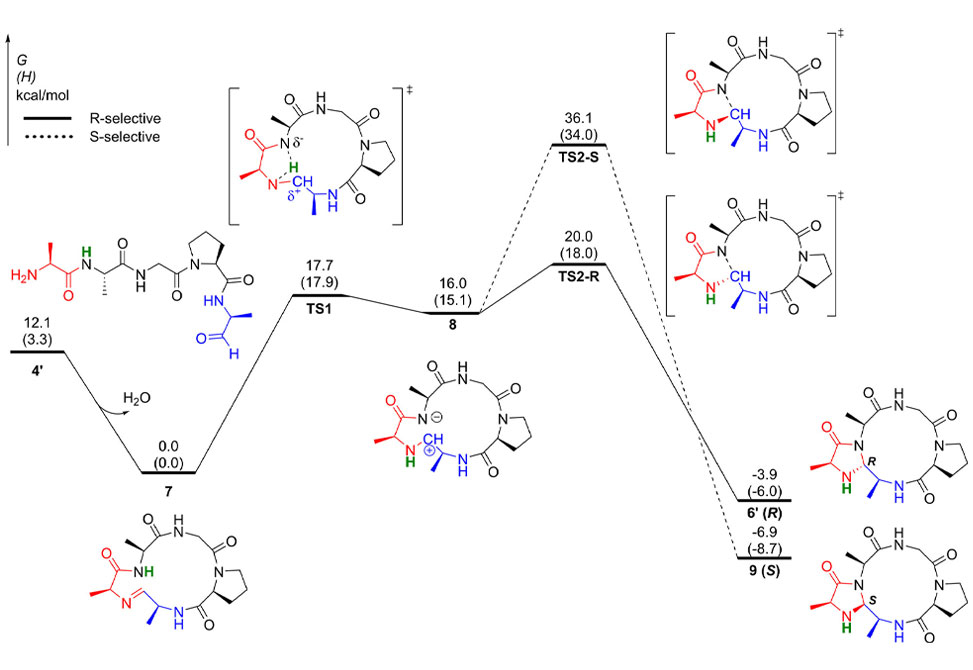APS Research & News
Mechanistic Studies of CyClick Chemistry
This article reflects work in the Raj Lab
Macrocyclic peptides have become increasingly important in the pharmaceutical industry. In collaborative work between the groups of Kendall N. Houk and Monika Raj, published in Angewandte Chemie, researchers present a detailed computational investigation of the reaction mechanism of the recently developed "CyClick" chemistry to selectively form imidazolidinone cyclic peptides from linear peptide aldehydes, without using catalysts or directing groups, Angew. Chem. Int. Ed. 2019, 58, 19073–19080.

Group members conducted computational mechanistic to investigate the effects of intramolecular hydrogen bonds, IMHBs, in promoting a kinetically facile zwitterionic mechanism in "CyClick" of pentapeptide aldehyde AFGPA. Their DFT calculations highlighted the importance of IMHB in pre-organization of the resting state, stabilization of the zwitterion intermediate, and the control of the product stereoselectivity.
[layerslider id="4"]Furthermore, members also identified that the low ring strain energy promotes the "CyClick" of hexapeptide aldehyde AAGPFA to form a thermodynamically more stable 15+5 imidazolidinone cyclic peptide product. In contrast, large ring strain energy suppresses "CyClick" reactivity of tetra peptide aldehyde AFPA from forming the 9+5 imidazolidinone cyclic peptide product.

Published here on Nov. 20, 2023
Title: Intramolecular Hydrogen Bonding Enables a Zwitterionic Mechanism for Macrocyclic Peptide Formation: Computational Mechanistic Studies of CyClick Chemistry
Authors: Huiling Shao, Victor Adebomi, Angele Bruce, Monika Raj, Kendall N. Houk
Citation: Angew. Chem. Int. Ed, Volume 62, Issue 41, October 9, 2023